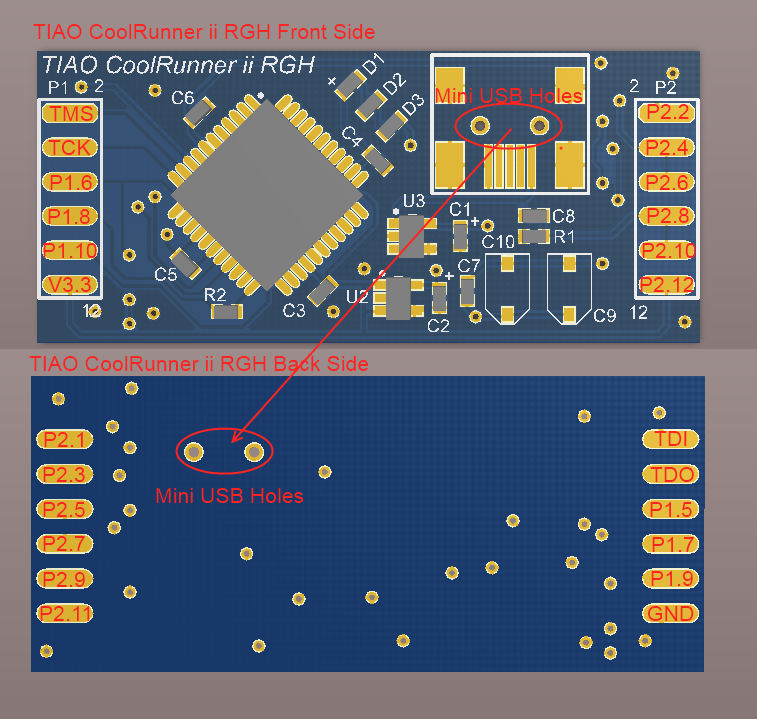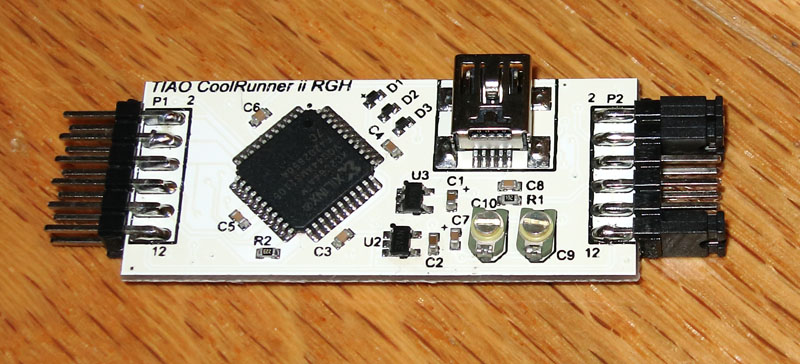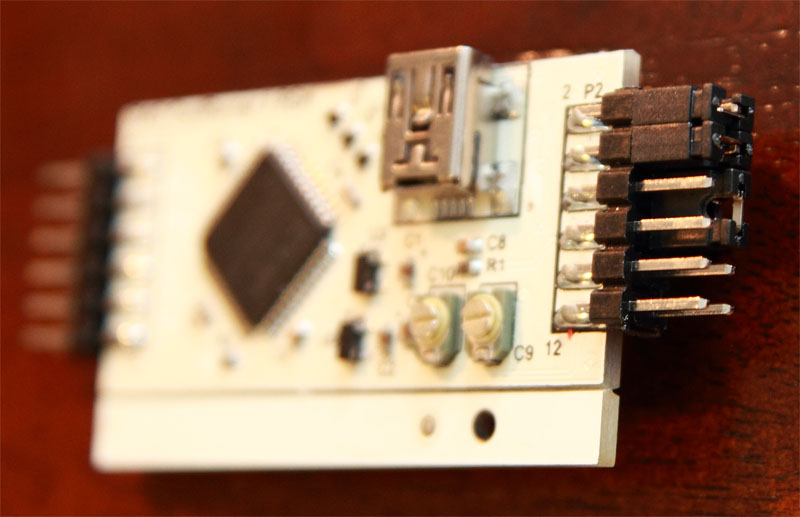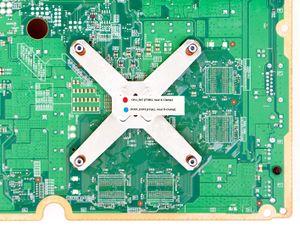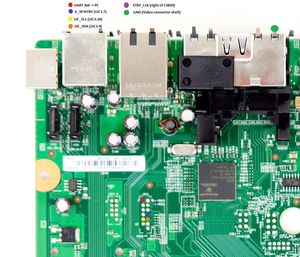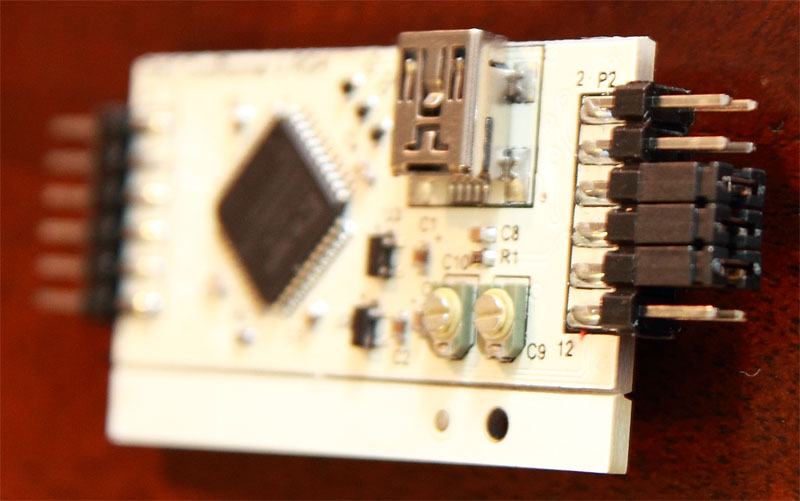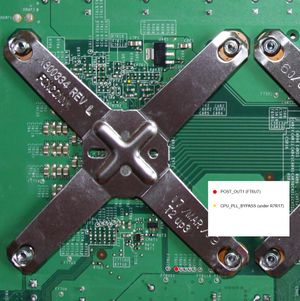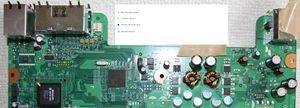TIAO Xilinx XC2C64A CoolRunner-II CPLD Dev Board (Reset Glitch) Tutorial

10 PCS, 10cm x 10cm, 2 layers prototype for $38.80 shipped!
Contents
Buy various JTAG cables for your Satellite Receiver, Cable Modem, Wireless Router, Standard Wiggler from http://www.easymg.com and http://www.diygadget.com
Overview
In this tutorial, I am going to show you how to install TIAO Xilinx XC2C64A CoolRunner-II CPLD Dev Board (Reset Glitch) on your XBOX 360.
TIAO CoolRunner II Installed on Slim: (Thanks to Roger!)
Required Hardware and Software
- TIAO Xilinx XC2C64A CoolRunner-II CPLD Dev Board (Reset Glitch)
- Soldering iron and solder
- Optional: XBOX 360 Case Opening Torx Tools
TIAO Xilinx CoolRunner-II Dev Board Overview
When we designed this board, we only had on goal in our mind: make it simple. Simple to install, simple to use. We achieved it. You don't need to solder any components, no jumper wires, it even provides a on-board 5v to 3.3v LDO (Low-drop Voltage Regulator) for JTAG programming. One board works for all.
Key features:
- Pre-populated required components for phat: 100nF Cap, 1K and 22K Resistors, three 1N4148 Diodes.
- Pre-populated required component for slim: 220pF cap. However, we also added two 3-30pF trimmer capacitors, thus the capacitance can be easily adjusted from 226pF to 280pF.
- The dev board ships with four female to female (50cm / 20 inch in length) flexible wires, cut the wires in half, solder one end to your mother board and insert the female headers to the pins on our dev board. This allows you to quickly remove the board for upgrading or testing.
Pinout of the board:
Program TIAO CoolRunner-II Dev Board Using JTAG
It is fairly easy to program TIAO CoolRunner-II Dev Board. All you need to do is to connect the JTAG pins (TDI, TDO, TMS and TDO) to the corresponding pins on your JTAG programmer.
If you have parallel port, we suggest to use our Universal JTAG Adapter to program the CPLD. As you can use the same adapter to read/write the 360 NAND.
- Config TIAO Universal JTAG Cable As A Buffered Xilinx Parallel Platform Cable III
- Program Xilinx XC2C64A Or Similar Xilinx CPLD Using TIAO Universal JTAG Cable
However, if you don't have parallel port on your pc, we have USB Programmer for you:
- How to program Xilinx CPLDs using TIAO USB Multi-Protocol Adapter (TUMPA) on Windows or Linux - program the XC2C64A
- Read/write 360 NAND via USB
As to power the CPLD, you can either use external +3.3V power source (available on our Universal JTAG adapter) to power your our CoolRunner-II, (the board has built in 1.8v LDO), or power it by USB (use the on board USB connector. The board has built in 3.3v and 1.8v LDO). However when choosing different power source, you need to move jumpers on different headers.
When powering it by onboard USB connector, you need to put a jumper on P2.11 and P2.13 (see pic below). After you have programmed it, move the jumper to the original position.
Install it on slim
Jumper Positions
There are three jumpers on the dev board. You can move jumpers on different positions for slim or phat. The default configuration is for slim.
Here is the jumper positions if you want to install it on a slim:
Use a jumper to short P2.1 and P2.2 Use a jumper to short P2.3 and P2.4 Use a jumper to short P2.5 and P2.7 (optional) No jumpers on other headers
Here is the photo (this is the default configuration):
Solder the wires
First, you need to disassemble your slim. For slim, you need to install 7 wires. The package contains 4 female to female wires, so you cut them all in half and you will have 8 wires. The female header side will be put on top of the dev board's headers, and the cut end will be soldered onto the mother board.
Now, locate the following soldering points on your slim mother board:
on the back of the mother board: CPU_RST, POST_OUT1
On the front side of the mother board: V-3P3STBY, I2C_SCL, I2C_SDA, STBY_CLK, and GND
Now solder 7 wires onto these points.
Double check your soldering make sure no short circuits
Use isolation type to fix the dev board on your mother board, then insert other end (female header) of these 7 wires to the dev board by the following configuration:
| Solder Point on Slim | Connection Header on TIAO CoolRunner-II Dev Board |
|---|---|
| POST_OUT1 | P1.9 |
| CPU_RST | P1.6 |
| STBY_CLK | P1.10 |
| I2C_SCL | P1.7 |
| I2C_SDA | P1.5 |
| V_3P3STBY | V3.3 |
| GND | GND |
Now you have successfully installed the dev board on your slim.
Adjust Capacitance for Slim
When RGH method was first discovered, a 220pf capacitor was recommended for slim to get the best glitch timing. However, later some users reported that a 270pf capacitor is better on some systems.
The nice thing about TIAO CoolRunner-II Dev Board is, it installed 2 trimmers (C9 and C10), you can adjust the capacitance of each trimmer from 3-30pf, so the total adjustable capacitance is from 226 pf to 280pf, which will give your prefect timing. You can use a flat screw driver to adjust the capacitance. Turn trimmer clockwise to increase capacitance, turn trimmer counter-clockwise to decrease capacitance.
Install it on Phat
Jumper Positions
There are three jumpers on the dev board. You can move jumpers on different positions for slim or phat. The default configuration is for slim.
Here is the jumper positions if you want to install it on a phat:
Put a jumper on P2.5 and P2.6 Put a jumper on P2.7 and P2.8 Put a jumper on P2.8 and P2.10 No jumpers on other headers
Here is the photo of jumper positions on a phat:
Solder the wires
Disassemble your phat. For phat, you need to install 6 wires. The package contains 4 female to female wires, so you cut three in half and you will have 6 wires. The female header side will be put on top of the dev board's headers, and the cut end will be soldered onto the mother board.
Now, locate the following soldering points on your phat mother board:
on the back of the mother board: CPU_PLL_BYPASS, POST_OUT1
On the front side of the mother board: V-3P3STBY, CPU_RST_V1P1_N, STBY_CLK, and GND
Now solder 6 wires onto these points.
Double check your soldering make sure not short circuit
Use isolation type to fix the dev board on your mother board, then insert other end (female header) of these 7 wires to the dev board by the following configuration:
| Solder Point on Phat | Connection Header on TIAO CoolRunner-II Dev Board |
|---|---|
| POST_OUT1 | P1.9 |
| CPU_PLL_BYPASS | P1.8 |
| STBY_CLK | P1.10 |
| CPU_RST_V1P1_N | P1.6 |
| V_3P3STBY | V3.3 |
| GND | GND |
Now you have successfully installed the dev board on your phat.
Debug Pin
The debug pin is on CPLD's pin 27.
- On fats, for about half a second, it should output 3.3v a few seconds after reset.
- On slims, for about a second, it should output 3.3v about a second after reset.
- Proper pattern on that pin ensures NAND CB works and all wires except reset are good.
Buy various JTAG cables for your Satellite Receiver, Cable Modem, Wireless Router, Standard Wiggler from http://www.easymg.com and http://www.diygadget.com

10 PCS, 10cm x 10cm, 2 layers prototype for $38.80 shipped!
